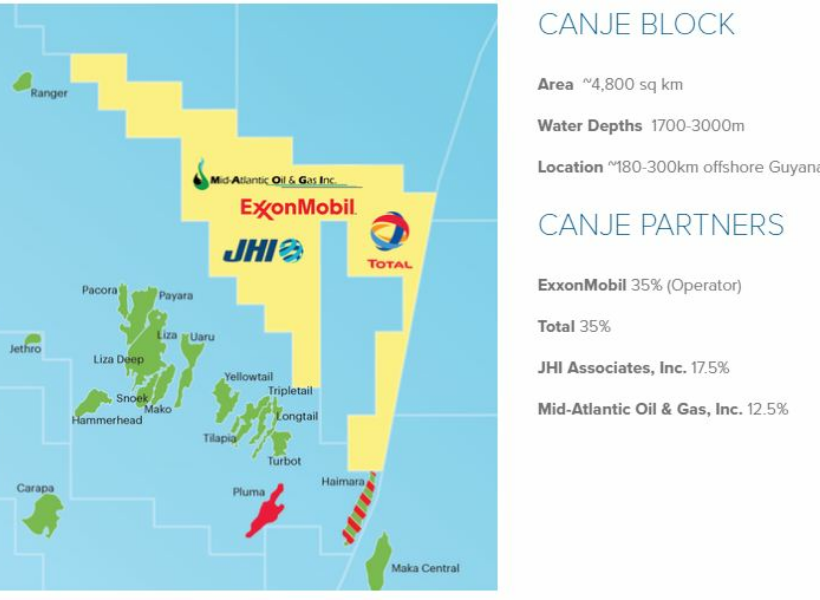By the end of the second quarter, the Canje Block is expected to see close to three wells being drilled with two of the prospects already earmarked. They are Bulletwood and Jabillo. The news was recently announced by Westmount Energy, an international investment firm, which has more than a three percent equity position in JHI Associates Inc.
JHI’s main asset is a 17.5% carried interest in the Canje Block covering over 6,000 square kilometres, immediately outboard of the Stabroek Block. As a result of a farm-in by Total, announced in February 2018, JHI is carried for the drilling of up to four wells and is funded for the drilling of additional wells.
Westmount said it is anticipated that the first wells in the Canje Block will be drilled in early 2020, with Total recently indicating that the Bulletwood and Jabillo prospects, located in the north-west portion of the block, as the most likely initial drilling targets.
The Canje Block lies 180km offshore Guyana in deep to ultra-deep water. According to JHI, Canje’s environment of deposition is unique among offshore Guyana blocks, in that it contains both continental slope and basin floor terrain. The company also said that Canje will be the first block offshore to test prospects on the basin floor which have the potential to contain larger accumulations of recoverable hydrocarbons.
Canje’s source story is also unique in that it is blanketed by two world-class source rocks. Present across the Guyana-Suriname Basin is the Cenomanian/Turonian source, which is locally known as the “Canje source rock.” This source rock has been actively generating hydrocarbons for six million years. The Canje Block is also covered by a much thicker and older Lower Albian source rock which was in place and generating hydrocarbons for over 40 million years.
JHI said that the proximity to these world-class source rocks means that reservoirs on the Canje block are in direct contact with the source rock for oil, and are charged through vertical migration. Effectively, Canje’s reservoirs are filled first before hydrocarbons migrate up-dip to other blocks that have seen discoveries.
JHI has identified prospects in four proven play types: Upper Cretaceous confined channel complexes, Lower Tertiary channel and lobe systems, and Lower Cretaceous carbonates.
Considering the foregoing, JHI said it is eager for the testing of the Upper Cretaceous confined channel system with exploration well – Bulletwood-1.
The testing will be commissioned by ExxonMobil which is the Operator of the Block.













